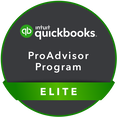|
Do you remember the days when you got a report card from school? Now that you have a business, your business has grades as well. But it’s up to you to calculate them. Here are some grades you can compute for your business to give it a report card of its own.
Financial Grades How successful is your business from a financial standpoint? These financial ratios can help you give yourself a grade. Return on equity This ratio measures profitability as it relates to the investment or money you have tied up in your business. The formula is net income / average equity. An ROE of 15 percent or more is an “A” for your business report card. Return on assets This ratio measures profitability as it relates to your business assets. The formula is net income / total assets. A ROA of five percent or more is an “A” for your business report card. Asset turnover This ratio measures efficient use of your business assets. The formula is sales / total assets. This number should be high for low margin businesses and low for high margin businesses. Profitability Grades How profitable is your business? You might know your bottom line number, but there’s more to it. Gross profit margin This ratio measures the financial health of a company as it relates to how much money is available to cover overhead. Calculate it as follows: (revenue – cost of goods sold) / revenue. The value will be different depending on what industry you’re in, but some say a range of 25 to 35 percent is normal for small business. Net profit margin Net profit margin measures how profitable your business is in relation to the amount of sales you have. As an example, a business that can make $50K in profits on $500,000 in revenue is more healthy than one that can make $50K profits on $3 million in revenue. The formula is net income / total sales, and although it depends on the industry, a net profit margin over 10 percent is considered an “A.” Report cards were important in school, but they’re even more important in business. If you’d like us to set up one for your business, please schedule a complimentary consultation or give us a call.
This is general information and should not be acted upon without first determining its application to your specific situation. Please contact us, your CPA or tax adviser for additional details.
This is general information and should not be acted upon without first determining its application to your specific situation. Please contact us, your CPA or tax adviser for additional details.
Before you climb into the car or book a flight, think about whether a virtual meeting could save you time and deliver the same result. It’s a change in habit to get used to, but when you do, you’ll find it saves you time and money.
To hold a virtual meeting, you’ll need a software app that works in your browser. There are many choices available, including Zoom, UberConference and GoToMeeting to name a few popular choices. It’s easier than you might think to hold a virtual meeting. The learning curve is more psychological than any skill or equipment needed. You’ll need a computer, and you can use your phone or your computer for audio. If you use your computer for audio, you’ll need a microphone and speakers. For best results, you should also have a webcam built into your computer, or you can purchase one separately and connect it. Everyone is camera-shy, or webcam-shy, but don’t let that stop you! You can always host a meeting without video. If a service offers a free account, use that option to try out virtual meetings. Just be aware of the limitations (such a number of attendees, time limits, etc.) that may be attached to a free service. Once you’ve set up an account, you can schedule a meeting or host a meeting on the fly. Setup choices include whether you’ll use computer or phone audio, whether you want the video to be on or off, and whether you want to record the session, which can be very handy. You can also mute and unmute participants, so that it can be used for classes as well as meetings. Here are a few tips to make sure your virtual meetings go off without a hitch:
Try virtual meetings in your business and see how they can help improve your ability to serve your clients and support your business needs. We’ve seen it in our business. We can assist clients from anywhere as needed. This allows us additional schedule flexibility to support your success.
You can also take a look at these accounts: cash, accounts receivable, and accounts payable. They should look reasonable to you based on your business history.
Accounts Receivable Aging Your gaining report can alert you to who has not paid their invoice, so that you can take action to collect that money. Any balances over 30 days should trigger a collection process since the older the receivable gets, the less likely it is to collect. Accounts Payable Aging Hopefully, this report is clean and you are able to pay all of your bills on time. If you have an unusually large amount in this account, you’ll want to make sure you have the future cash to pay the bills. Income Statement The first number most entrepreneurs look at on the income statement is profit. It’s a good idea to review every account balance on this report to see if it is what you expected. Some questions to ask yourself include:
Sales Reports There are many excellent sales reports to dive deeper into your revenue so you can see what sold and what didn’t. Sales by Item and Sales by Customer are two good options for you to get more detail about your revenue balances. By analyzing your revenue, you can see what promotions worked and how you might take action to increase sales. These five reports are very basic, but they are also very key to your business. To profit from these reports, it’s up to you to take action in your business to improve your success. If you need assistance with setting up or maximizing your accounting system, please give us a call or schedule a complimentary consultation to see how we can assist.
This is general information and should not be acted upon without first determining its application to your specific situation. Please contact us, your CPA or tax adviser for additional details.
Even if your business is no longer a startup, the failure rates for businesses started in 2014 were as follows:
Many of the reasons for business failure can be prevented with good budgeting and planning. Here are some benefits of making a budget and managing to it.
Getting started with a budget is easy. If you’ve been in business for more than one year, you can start with last year’s actual figures and then adjust for the growth and changes you want. The numbers can be input into your accounting system so that you can get reports that measure actual progress versus the budget numbers. You can then make good business decisions based on your variances. When you take a little bit of time to create a budget, you really can enjoy the freedom of knowing you’re on track to make your numbers. If we’re not already working with you on your budget, feel free to reach out – we would be happy to assist.
This is general information and should not be acted upon without first determining its application to your specific situation. Please contact us, your CPA or tax adviser for additional details.
Another benefit is built-in support offerings. As we are all too aware, while technology can be very beneficial with improving efficiencies and workflows, bugs and issues happen. New functionality may require additional training. Generally, support is offered for subscription-based services at no additional cost, so when those frustrating issues arise, there is someone available within a short time frame to address your issue.
However, as a firm focused on assisting our clients with business success through accurate and improved reporting and financial management as well as workflow efficiencies, check out our Resources page and this handy QBO pricing comparison chart to see how we might be able to help you save money on software and app subscriptions. If you are considering a tool that isn't listed, please send us an email with the name of the tool/app/software and the related website and we will be happy to check out what discounts are available through our Reseller or ProAdvisor programs. If you are interested in options that may help your business streamline and/or improve workflow and efficiency, please contact us or schedule a complimentary consultation to discuss your needs and goals. We would love to assist you to greater success!
This is general information and should not be acted upon without first determining its application to your specific situation. Please contact us, your CPA or tax adviser for additional details.
Do customers need to physically return the product in-store or via shipping? What if it’s a service? Are they refunded in cash or credit card? Or is it a store credit? Is there a deadline for refunds?
All of these questions should clearly be outlined in your refund policy. Your website is a great place to publish it. Customer Complaints If your customer has a complaint, how should they submit it? Is there a hotline to call, a suggestion box, or a form to fill out? If your business and employees are licensed, is there a government agency to write? A notice should be posted on your website and in your physical location describing where to submit complaints. Shipping Policy Not all businesses need a shipping policy, but you do if you ship physical goods to a customer location. What is the cost of shipping? What is the expected delivery time? A shipping policy explains this as well as what can go wrong: If the item was never received, what should one do? Must you sign for a shipment? If you return a shipment, who pays the shipping? If an item is received damaged, how do you file a claim? Payment Methods While not a policy this customer communication needs to be clearly posted. What forms of payment will you take? If you take a check, what ID does the customer need to show? Do you take some of the newer forms of payment such as Apple Pay or cryptocurrencies? How do gift cards work? Past-Due Accounts If a customer doesn’t pay their bills on time, they should know what to expect. Will interest be charged? Will the account be sent for collections? Will someone break the customers’ legs? Will future purchases be cancelled or require a C.O.D. (cash on delivery) payment? You might not think of your accountant when it comes to writing these policies, but you should; we can help. A good accountant can help you craft these customer service policies so that your communications and expectations with customers are better than ever.
This is general information and should not be acted upon without first determining its application to your specific situation. Please contact us, your CPA or tax adviser for additional details.
A quick glance is all you need to check your fuel gauge, speed limit, engine temperature, and RPM when you’re driving down the road. Your car’s dashboard is designed to focus you on what’s important and what you need to know to have a safe trip.
Your car’s dashboard items, if they applied to business, would be called key performance indicators or KPIs. Unlike a car, the KPIs of your business vary depending on your business goals and what’s important to you. Common ones might include your cash balance, how fast you get paid, how much revenue is coming in, and whether you're making a profit. There are literally hundreds of them to choose from, and many of them are not derivable from your financial statements, such as number of orders, client satisfaction levels, and employee turnover. Would it be useful to have a dashboard of KPIs for your business so you can know what’s working and get alerted to what needs focus? Here are the steps to creating a dashboard for your business:
There are many great KPIs available right in your accounting system, which might be plenty to get started with. And there are some real gems outside your accounting system that will take a bit of work to calculate. In any case, we can help you through this process. Feel free to reach out to us any time to discuss the possibilities of having a dashboard in your business.
This is general information and should not be acted upon without first determining its application to your specific situation. Please contact us, your CPA or tax adviser for additional details.
2. Invoice faster or more frequently
The best way to smooth cash flow is to make sure outflows are in sync with inflows. If you make payroll weekly but only invoice monthly, your cash flow is likely to dip more often than it rises. When possible, invoice more frequently or stagger your invoice due dates to smooth your cash balances. Take a look at how long it takes you to invoice for your work after it’s been completed. If it’s longer than a few weeks, consider changing your invoicing process by shortening the time it takes to send out invoices. That way, you’ll get paid sooner. Talk to us about options for automating your invoicing. 3. Collect faster Got clients who drag their heels when it comes to paying you? Try to get a credit card on file or an ACH authorization so you’re in control of their payment. Put a process in place the day the invoice becomes late. Perhaps the client has a question or misplaced the bill. Be aggressive about following up when the bill is 45, 60, and 90 days past due. Turn it over to collections quickly; the older the bill is, the less likely it is to get paid. If you need assistance with automating follow-up, please reach out to us. 4. Pay off debt As your cash flow gets healthier, make a plan to pay off any business loans or credit cards that you have. The sooner you can do this, the less interest expense you’ll incur and the more profit you’ll have. Interest expense can really add up. If you have loans at higher interest rates, you might try to get them refinanced at a lower rate, so you won’t have to pay as much interest expense. 5. Reduce spending You don’t always have to give up things to reduce spending. Look at your expenses from last year and ask yourself:
Managing cash flow is always a challenge, and these tips will help give you a little cushion to make it easier. Please let us know if you would like options for implementing any of the above changes.
This is general information and should not be acted upon without first determining its application to your specific situation. Please contact us, your CPA or tax adviser for additional details.
|
AuthorSuccessfully meeting the challenges inherent to new and smaller businesses provides me with a special type of satisfaction. Archives
February 2022
Categories
All
|










 RSS Feed
RSS Feed







